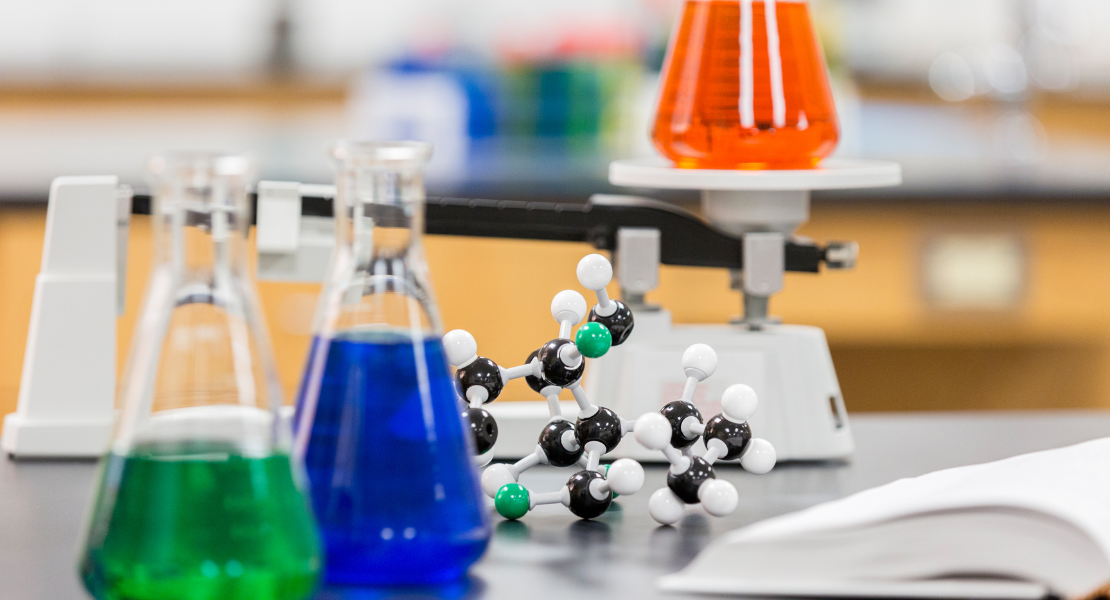Role of Technology in Tracking Science Lab Equipment
Technology plays a crucial role in tracking science lab equipment. Technology allows scientists and lab managers to accurately monitor all lab equipment's usage, maintenance, and location.
- Inventory management - lab equipment tracking software can help manage inventory by providing real-time data on the quantity and location of each piece of equipment. This information is useful for tracking equipment usage, performing preventative maintenance, and ordering new supplies
- Asset tracking - by utilizing barcode scanning or radio frequency identification technology (RFID), scientists can quickly and accurately track the movement of equipment within the lab. This helps to reduce the risk of equipment loss or theft and ensures that equipment is always accessible when needed.
- Maintenance management - technology can also be used to track maintenance schedules and to record maintenance and repair activities. This helps to keep equipment in good working order and to avoid costly repairs or replacements.
- Reporting - science lab equipment tracking software provides detailed reports on the use, location and maintenance of equipment. This information is useful for budgeting and resource allocation decisions.
By tracking and managing lab equipment, scientists and lab managers can focus on their research without having to worry about equipment availability or maintenance.
The Benefits of Using Technology to Track Science Lab Equipment
Using technology to track science lab equipment can provide several benefits, including:
- Increased efficiency: Using technology makes it easier to keep track of the location and usage of equipment, reducing the time spent searching for missing or misused items.
- Improved accuracy: Technology can automate the tracking process, reducing the possibility of human error.
- Better resource allocation: With a real-time view of equipment availability and usage, optimizing their use and reducing waste is more effortless.
- Enhanced safety: With technology, it is possible to monitor equipment to ensure that it is being used correctly, reducing the risk of accidents or equipment damage.
- Cost savings: By keeping track of equipment usage, it is possible to plan for and prioritize maintenance, extending the life of the equipment and reducing the need for replacements.
Types of technologies used for tracking science lab equipment
Several types of technology can be used for tracking science lab equipment, including:![]()
- Barcode scanning: Lab equipment can be labeled with barcodes that can be scanned to track their location, usage, and maintenance history.
- RFID (Radio-Frequency Identification): RFID tags can be attached to lab equipment, allowing them to be tracked wirelessly, even if they are not in direct sight.
- Mobile apps: Mobile apps can be used to log equipment usage, track inventory, and monitor maintenance schedules, providing real-time information about lab equipment.
- Web-based software: Web-based software can be used to manage and track lab equipment, providing a centralized view of all equipment and making coordinating its usage and maintenance easier.
- Sensors: Sensors can be used to monitor the usage and condition of lab equipment, providing real-time data on their performance and helping to predict potential issues.
Each of these technologies has its own advantages and limitations, and the choice of technology will depend on the laboratory's specific needs.
Implementing a technology-based tracking system
To implement a technology-based tracking system in your science lab, you can follow these steps:
- Identify the needs: Determine what you want to track, such as samples, equipment, or experiments.

- Evaluate technology options: Research different software or hardware solutions, such as barcode scanners, RFID readers, or web-based platforms.
- Set up the system: Install the technology and configure it to meet your specific needs. This may involve setting up a database, programming the system, or training users.
- Integrate with existing systems: If you have other systems in place, such as a laboratory information management system (LIMS), you may need to integrate the tracking system with these systems.
- Test and refine: Test the system to make sure it is working as expected and make any necessary adjustments.
- Train users: Provide training to ensure everyone in the lab knows how to use the system effectively.
- Implement and monitor: Once the system is up and running, monitor its usage to ensure it is being used correctly and to identify any areas for improvement.
By implementing a technology-based tracking system, you can improve the efficiency and organization of your science lab, leading to more accurate and reliable results.
Maximizing the Use and Lifespan of Science Lab Equipment
To maximize the use and lifespan of science lab equipment, follow these steps:
- Proper Maintenance: Schedule regular check-ups and maintenance for the equipment, such as cleaning and lubrication. Track maintenance records using Metalcraft asset tracking labels and tags.
- Proper Storage: Store the equipment in a dry, clean and secure location, away from direct sunlight and extreme temperatures.
- Handle with Care: Avoid dropping or otherwise damaging the equipment.
- Use as Intended: Only use the equipment for its intended purpose and follow manufacturer guidelines for usage and storage.
- Calibrate Regularly: Regular calibration is important to ensure accuracy and prolong the life of the equipment. Track calibration information using Metalcraft's asset tracking labels and tags.
- Regular Inspections: Regularly inspect equipment for signs of wear and tear, and repair or replace it as needed.
- Training: Provide training to all users to ensure that they understand how to properly use and care for equipment.
- Purchase Quality Equipment: Invest in high-quality equipment that is durable and reliable to minimize the need for repairs and replacements.
- Budget for Replacement: Plan for regular equipment replacements to ensure that the lab always has the latest, most reliable equipment.
Properly label and document the use and care of equipment and any repairs or replacements to ensure accountability and historical record-keeping. By following these steps, you can maximize the use and lifespan of science lab equipment and ensure that it performs accurately and reliably over time.
Tracking and caring for your educational institution's science lab equipment doesn't have to be complicated or time-consuming when you effectively use technology. Check out more on effective strategies and check out our case studies page for real-world examples. To learn more about asset tracking through RFID and barcode, contact us at [email protected].
 | About the Author: Marianne AlvaradoMarianne Alvarado is our Vice President of Sales. Alvarado joined Metalcraft in March of 2000 as a Territory Specialist, became Sales Manager in January 2022 and was named Vice President of Sales during August of 2023. She leads both the Outside and Inside Sales teams. Marianne lives in Davenport with her husband, Dave Beeman. Mobile Phone: 641-529-9492 Email: [email protected] Office: 3360 9th St. SW, Mason City, IA 50401 Office Phone: 641-423-9460 |




